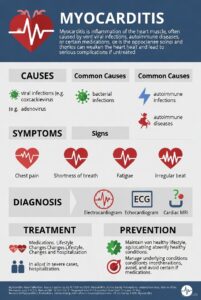Clinical manifestations
- Typical patient is asymptomatic except during sickling episodes
- Symptoms may include
- Pain from tissue hypoxia and damage
- Pallor of mucous membranes
- Jaundice from hemolysis
- Prone to gallstones (cholelithiasis)
Complications
|
Body organ |
Complications |
|
Brain |
Thrombosis or hemorrhage causing paralysis, sensory deficits, death |
|
Eye |
Hemorrhage Retinal detachment Blindness Retinopathy |
|
Lung |
Acute chest syndrome Pulmonary hypertension Pneumonia |
|
Heart |
Heart failure |
|
Liver and gallbladder |
Hepatomegaly Gallstones |
|
Spleen |
Splenic atrophy (autosplenectomy) |
|
Kidney |
Hematuria Renal failure |
|
Bones and joints |
Hand-foot syndrome Osteonecrosis |
|
Penis |
Priapism |
|
Skin |
Stasis ulcers of hands, ankles, and feet |
- Infection is a major cause of morbidity and mortality
- Function of spleen becomes compromised from sickled RBCs
- Autosplenectomy is a result of scarring
- Pneumococcal pneumonia most common
- Severe infections can cause aplastic crisis
- Can lead to shutdown of RBC production
- Function of spleen becomes compromised from sickled RBCs
- Acute chest syndrome
- Pulmonary complications that include pneumonia, tissue infarction, and fat embolism
- Characterized by fever, chest pain, cough, pulmonary infiltrates, and dyspnea
- Leads to multiple serious complications




